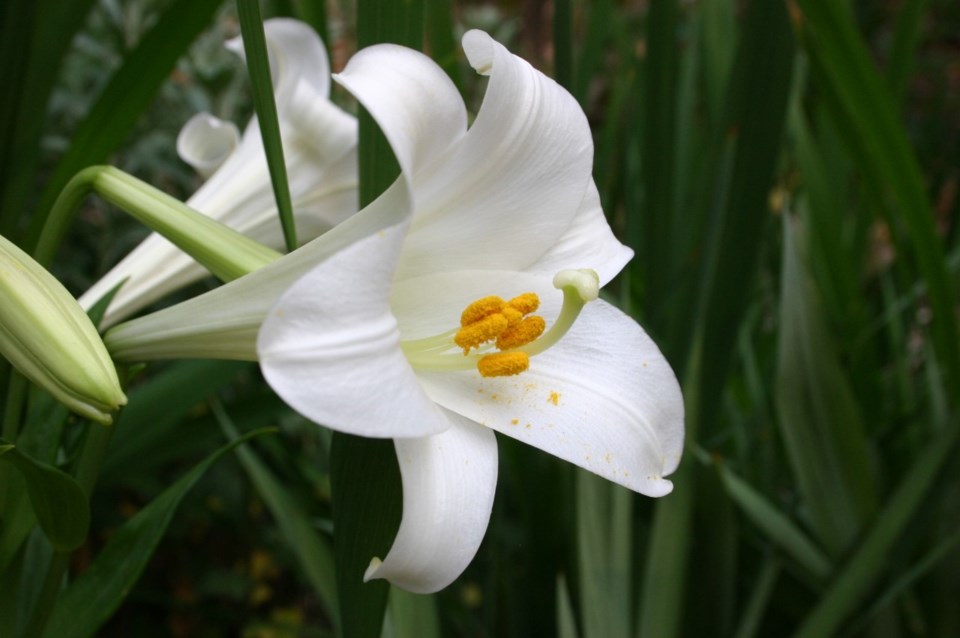The following column was submitted to the Tri-City News from Brian Minter — master gardener, best-selling author, Order of Canada recipient and co-owner of .
Easter lilies are still very much a part of the Easter season — not only for their serene beauty, but also for their enticing fragrance.
One whiff of their perfume and you just know it's Easter!
I have been unable to find exactly when lilies were first grown commercially for the Easter season, but old growers’ records from the 1920s indicate that, at that time, they were in production in North America.
The lily was chosen because of its long, pure white trumpets, enticing perfume and its ability to be forced into bloom for a specific season.
'Croft' was one of the first varieties selected and I can remember my father growing them back in the early 50s. They were lovely, but very much like early poinsettias, it was a trick to keep the foliage on until Easter.
In the 60s, the 'Ace Lily' was introduced, and later 'Nellie White', which is one of the finest longiflorum varieties.
Today, most of the Easter lily bulbs are grown in Oregon.
Quality bulbs make the difference between success and failure for many lily growers, so it is always a mad scramble to harvest the bulbs at the right time and have them shipped immediately to the growers’ cold storage facilities to begin a pre-cooling process.
The forcing period for lilies is about 100 days and timing is everything. There is not a huge demand for Easter lilies on Easter Monday. With the Easter season changing each year and with variable weather factors, it is a tricky business.
Because of the many temperature fluctuations during the forcing period, it is important to keep your lily as cool as possible in your home.
They love an east or north window. Water them thoroughly, then let them dry out only slightly before you water again.
If you keep them too wet or too dry, the bottom leaves will yellow and fall off.
As each blossom opens, it's a good idea to pick out the yellow anthers to prevent them discolouring the pure white blooms and to protect all those noses, that venture near to smell the lovely perfume, from getting a dusting of yellow pollen.
More importantly, it saves a dry-cleaning bill if the pollen gets on your clothes. As each flower finishes, cut it off to keep the plant looking fresh.
It is ironic that these lily bulbs are hardy if planted in the ground as a bulb but once forced into bloom, they lose that hardiness quality.
If you plant your Easter lily out in the garden when the flowers have finished, you will often be treated to a second flowering this fall.
Oriental lilies, like ‘Stargazer’, are beautiful alternatives to Easter lilies. They both come in lovely shades of pink and are highly perfumed.
After flowering, they can be planted in your garden with your other hardy lilies for a beautiful display year after year.
Lilies are only available for the next few days, so if you would love to fill your home with their amazing perfume, do pick one up.



